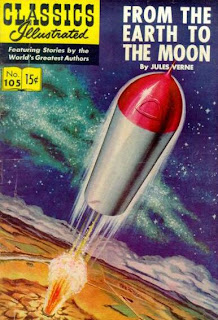 "Smartness/genius" inherited? Maybe. The Bach family was fortunate and musically talented. The Einstein's second son Eduard was not so fortunate. "Smartness/genius" are relative terms and in common parlance may not necessarily express one's ability to solve problems or do projects. It seems that the common definition here is measured only by an individual's ability [or potential ability] to do science. I know people who couldn't even balance the electrical disassociation equation of water, but they have the skill ["smartness/genius"] of constructing a fine piece of furniture or break down, repair, and assemble the engine of a 1961 Ford Falcon in 24 hours. So who's the genius...the furniture craftsman or the fellow who can balance chemical equations? Is it, as some have suggested, a matter of genes, environment, or what?
"Smartness/genius" inherited? Maybe. The Bach family was fortunate and musically talented. The Einstein's second son Eduard was not so fortunate. "Smartness/genius" are relative terms and in common parlance may not necessarily express one's ability to solve problems or do projects. It seems that the common definition here is measured only by an individual's ability [or potential ability] to do science. I know people who couldn't even balance the electrical disassociation equation of water, but they have the skill ["smartness/genius"] of constructing a fine piece of furniture or break down, repair, and assemble the engine of a 1961 Ford Falcon in 24 hours. So who's the genius...the furniture craftsman or the fellow who can balance chemical equations? Is it, as some have suggested, a matter of genes, environment, or what?Hans-Josef Küpper wrote:
On July 28 in 1910 Eduard, the second son of Albert Einstein (1879–1955) and Mileva Maric (1875–1948), was born in Zurich. From his mother he received the nickname "Tete". Eduard was a sensitive child who was often ill. Einstein and his family moved to Berlin in 1914. As Mileva didn't like Berlin and the marriage with Einstein was broken, she decided to move to Zurich with her sons only a short time later. They got divorced in 1919. Eduard and especially his older brother Hans Albert (1904–1973) suffered a lot from the divorce of their parents.
In Zurich Mileva took care of the education of her sons. Eduard, a very talented pupil, made an especially good impression due to his highly intellectual and musical talent. Despite the separation Einstein often visited his sons and Mileva in Zurich. He also undertook little journeys with his sons. Eduard passed his A-levels in 1929 as one of the best students. Afterwards he began to study medicine. He wanted to become a psychiatrist.
At the age of twenty, Eduard began to suffer from schizophrenia. That happened in 1930. Mileva took care of her "Tete" lovingly. He had to go to "Burghölzli", a psychiatric sanatorium in Zurich, for the first time in 1932. But it shouldn’t be for the last time. Eduard abandoned his studies. The problems with her ill son and the high costs caused by the stays in the sanatorium were a great burden for Mileva .
Albert Einstein and his second wife Elsa emigrated to the United States in the autumn of 1933. There he found a new working place in Princeton, New Jersey. Eduard's brother, Hans Albert, and his family went also to the United States in 1938.
From 1948 on, after the death of his mother, Eduard lived constantly in "Burghölzli" where he died in 1965. He survived his father by ten years.
Incidentally, their first son, Hans Albert, was born in 1904 and died in 1973. He was a hydraulic engineer.
























